Papers by Włodzimierz Juśkiewicz
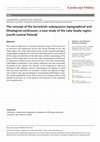
Landscape Online, Apr 19, 2023
The research objective is to produce thematic maps of the continuum of terrestrial and subaqueous... more The research objective is to produce thematic maps of the continuum of terrestrial and subaqueous terrain and surface lithology of the Lake Gopło region. The maps were based on the results of geomorphological and geological mapping in the vicinity of Lake Gopło and a reconnaissance of the shape and sediments of the lake basin and the morphology of the basins of other large lakes in its vicinity. A geomorphological classification of subaqueous landforms was carried out and, in the case of Lake Gopło, a lithological classification of its bottom sediments was also conducted. According to the authors, the features of the subaqueous relief and lithology of lake sediments should, depending on the degree to which they have been identified, be included in studies and legends of largeand medium-scale geomorphological and geological/lithological maps. This would significantly enrich their content and could be used to draw detailed conclusions as to the genesis and evolution of the landscape and its geodiversity.

Geographia Polonica
The variation of water velocity in an artificial dam reservoir is influenced not only by the infl... more The variation of water velocity in an artificial dam reservoir is influenced not only by the inflow discharge, but also by the bathymetry of the reservoir and the water level at the dam. The depiction of spatially complex variations in flow velocity through a reservoir would not be possible without the use of hydrodynamic models. A reliable hydrodynamic model of the reservoir is an effective tool for predicting and analyzing changes in the reservoir geoecosystem in an age of changing climate and risk of water stress. A depth-averaged two-dimensional AdH model was used to visualize the hydrodynamics of the Włocławek Reservoir. Running the model for eight different hydrological conditions delivered consistent results and allowed to calibrate the model parameters. Additionally, it provided a way to verify the data regarding the rating curve of the Vistula River upstream the reservoir.
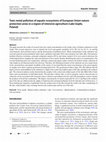
Aquatic Sciences
The paper presents the results of research into toxic metal concentrations in the surface layer o... more The paper presents the results of research into toxic metal concentrations in the surface layer of bottom sediments in Lake Gopło. The research objectives were to identify the levels and spatial variability of Cu, Pb, Cd, Zn, Ni, Cr, As and Hg concentrations, their potential sources and the determinants of pollution levels. Metal contamination of the sediments was assessed using the geoaccumulation index (Igeo), pollution load index (PLI) and ecological risk index (RI). Chemometric methods (Pearson correlation, principal component analysis (PCA) and cluster analysis (CA) were used to determine the relationship between sampling sites and concentrations of toxic metals, thereby identifying the sources of contamination. The research found that grain-size composition, carbonate content and organic matter content in the bottom surface sediments of Lake Gopło are all characterised by low diversity. Therefore, the lithological features of the sediments are not a major factor in the concent...
Journal of Maps
This article presents maps of reconstructions of selected primary (i.e. prior to the thirteenthce... more This article presents maps of reconstructions of selected primary (i.e. prior to the thirteenthcentury founding of the town) abiotic components of the natural environment of medieval Toruń (northern Poland, Kuyavian-Pomeranian Voivodeship) and its close suburbs. The reconstructions were carried out on the basis of topographical, geological and historical data. Despite their many limitations, the procedures employed represent the first attempt at a quantitative reconstruction of the primary relief, surface geology and hydrology of the analysed area. The result of the reconstruction presented on the maps could be used as the basis for both a reconstruction of biotic components of the natural environment and verification of hypotheses regarding the conditions of the founding and spatial development of the town.

Journal of Maps
The main aim of the paper was a visual comparison of lichen distribution with urban environmental... more The main aim of the paper was a visual comparison of lichen distribution with urban environmental factors. This paper presents a cartographic method for representing the spatial distribution of anthropogenic and natural factors in atmospheric air pollution and prevalent elements of the natural environment and their correlation to occurrences of two selected lichen speciesthe acidophilous Hypogymnia physodes and the nitrophilous Xanthoria parietina in the area of Toruń (Central Poland). Lichens are a good indicator of changes in habitat conditions. Analyses of the occurrence of lichens in Toruń were conducted for data covering a period of more than 60 years. A choropleth map method (a square tile grid map) was used, based on a grid of 144 one-kilometre squares (ATPOL). An inventory of taxa was made in 137 squares (localities). This recorded the type of substrate and abundance (extent) of occurrence.
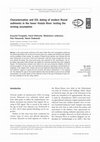
Bulletin of Geography. Physical Geography Series, 2016
In this study modern sediments of the lower Vistula River were investigated to determine the rela... more In this study modern sediments of the lower Vistula River were investigated to determine the relationship between the structure and texture (grain size, rounding and frosting) of the deposits and the possibility of their zeroing. The samples of modern fluvial deposits were collected from the lower Vistula River at two sites in Toruń and Ciechocinek. Sand bars newly emerged from the river were selected for testing. The coarse quartz grains were separated for OSL measurements. The single-aliquot regenerative (SAR) technique was applied for measuring equivalent doses from multigrain aliquots. The obtained dose estimates were found to be very low, proving the reliability of the OSL zeroing assumption. The dose rates were estimated by gamma-ray spectrometry, demonstrating homogeneity of the radiation field. Analysis did not show significant relationships between the examined sediments’ capacity to zeroing and their structural and textural characteristics, or the sampling site. The obtain...
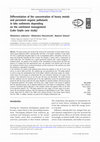
Bulletin of Geography. Physical Geography Series, 2015
This paper presents the results of the study on the concentration of heavy metals and persistent ... more This paper presents the results of the study on the concentration of heavy metals and persistent organic pollutants (POPs), including PAHs and PCBs, in the bottom sediments of Lake Gopło. This lake is significantly elongated (about 25 km); its longitudinal profile is diversified, and there are deeps and thresholds impeding the flow of water. The shoreline is varied, which is characteristic of tunnel valley lakes. The catchment has a typical agricultural character with a point arrangement of industrial centres. The analysis of the diversity of the concentration of heavy metals and POPs was based on 37 samples from two representative cores: one collected in the northern part of the lake, the catchment of which shows an industrial character, and the second one in the southern part where the catchment is agricultural in character.In the sediments, the content of the following heavy metals was analysed: Cu, Pb, Cd, Zn, Ni, Cr, Hg and As, as well as PAHs and PCBs. The sediment age was det...

Prace Geograficzne - Instytut Geografii i Przestrzennego Zagospodarowania, 2003
The lithofacies research only concerned the layer top (upper) sequences of the Vistula's alluvia ... more The lithofacies research only concerned the layer top (upper) sequences of the Vistula's alluvia near Ciechocinek and Toruń, 3 to 5 m in thickness. The total thickness of channel and overbank alluvia which form the Vistula's floodplain in the bed of Kotlina Toruńsko-Bydgoska is not stable, and it varies from 3 m to 16 m, with the average of approx. 10-12 m. It is difficult to unambiguously define the borderline between channel and overbank alluvia deposits, and thus to determine the thickness of deposits formed during floods. The author's research (Andrzejewski, Juśkiewicz) in the mouth sections of the floors of lateral valleys showed that the thickness of channel alluvia in plains formed by meandering rivers is variable, with a tendency to grow from about 1.5 m to 4.0 m in central parts of valley floors (Andrzejewski 1994). The maximum thickness of the channel alluvia near Ciechocinek and Toruń is estimated at 4-5 m (Tomczak 1971; Myślińska 1980; Wrotek 1990; Szmańda 2000). An assumption can therefore be made that the analyses dealt with this very facies of the alluvia. In its vertical formation, the authors mentioned above generally point to two sequences: the upper one, or the silt-sand layer, 0.5-2.0 m thick; and the lower one, resting immediately on the channel alluvia, and consisting of dust and clay deposits, with the thickness of 1 to 2.5 m. The lithology of overbank deposits in the western part of Kotlina Toruńska was recently studied by Kordowski (2001), who, basing on an analysis of the textural features, showed their considerable diversification in terms of the spatial shares of individual lithofacies. The currently available identification of the structural and textural features of the alluvia in the Vistula valley bed does not really solve the question of their spatial and vertical variability in relation to the channel system types, as changing over at least the past 12 thousand years. The problem is particularly essential in the case of the lower Vistula valley floor, which, as said above, developed differently in gap sections and in basin widenings. (Falkowski 1982; Tomczak 1971, 1982, 1987; Mycielska-Dowgiałło 1987; Niewiarowski 1987; Babiński 1992 and others). In an analysis of the vertical alluvia formation in the researched "channels islands" and in the Vistula floodplain, significant differences were discovered. Generally, much greater changes of textural parameters can be found in the vertical profiles of the islands, in the structure of their roof sequences. Compared with the floodplain, the changes are more obvious in respect of both their frequency and range. When the vertical diversification of the alluvia in Kępa Dzikowska, Kępa Bazarowa and Kępa Strońska was analysed, down to 4-5 metres, a considerable texture variety was found between the gravel and clay fractions. These facts are a sign of rather frequent and extreme fluctuations in the energetic environment of the river while the deposits were formed, which is supported by a diagram of a rank evaluation of the current environments dynamics for the samples collected (Fig. 7A - all figures in the article). A selected example may be the section of Kępa Dzikowska (Fig. 3), in which three exposures are presented. Exposure (I) shows the structure of the oldest and highest part of the island (Fig. 2). In the upper part, there are fine deposits of silts and silt sands, towards the bottom turning into fine and medium sands, very frequently separated by thin layers of very fine deposits. A similar rhythm of textural changes can be observed in exposure (II), situated at the opposite rim of the same (age-wise) part of the island. A dramatically different structure was revealed in exposure (III), where a thicker series of massive and cross-layered sands is found at the layer top parts. Below the level of about 2.5 metres, sequences of fine and very fine alluvia begin, with multiple sand interbeddings. One ought relate the different vertical alluvia formation system in the youngest part of the island to the different deposit environment. The younger part of the researched island became incorporated in the older one in mid-20th century (Fig. 2). Earlier, that part belonged to the dynamic mid-channel bar, which appeared at the turn of the 19th century. The layer top parts is thus built with channel fractions representing the rather variable energetic environment of the river. This phenomenon also finds evidence in the other exposures in Kępa Dzikowska and in the Toruń islands. The analysis of the spatial changes in the structural and textural parameters of the alluvia in the clumps showed their marked variability even at short sections of several dozen metres. It is reflected in large amplitudes of the percentage shares of samples located in fields I, II, III and IX, i.e. characteristic of significant dynamic activity of deposit environments (Fig. 7). The substantial vertical and spatial lithofacies diversification of the alluvia in the researched "channel islands" should therefore be interpreted as an effect of parts of early mid-channel bars, differing as to their age and energetic conditions, being incorporated in the structure of a single formation. This condition was characteristic of the period preceding the regulation of the Vistual's channel, which, in Toruń Basin, had features of a braided multicurrent river, with an evident tendency to create more stable systems, typical of anastomosing rivers. An analysis of the vertical overbank alluvia of the Vistula near Toruń and below Kępa Bazarowa and Kqpa Strońska (Fig. 1) showed that the dynamics of textural changes to the alluvia in the floodplain is lesser in relation to the situation in the islands, as described above. On the one hand, it is reflected in a narrower range of changes in the textural parameters, and on the other - in a greater frequency of changes, especially at depths ranging from approx. 2.0 m to 4.5 m (Fig. 4, 5, 6B). In this view, the duality of the vertical diversification of the overbank alluvia becomes apparent. It is visible in increased shares of relatively thick sand and silt lithofacies in the layer top parts, down to the depth of about 2-2.5 m. The bottom sequences of the overbank alluvia, down to the depth of approx. 4.5 m, demonstrate a markedly greater frequcncy of textural changes, along with a simultaneous tendency for the range of those changes to decrease. Thus, the lower alluvia sequence mainly consists of finer deposits in the form of fine sands, as well as silts and clays. In a scdimentological analysis of several dozen drillings and exposures it was also found that the share of the sand fraction in the whole structure of flood alluvia becomes reduced down the Vistula's course, in the section below the mouth of the Drwęca, i.e. where the river's channel takes its characteristic westward turn. It seems that the phenomenon can be explained by the fact that the river's energy is decreased as it suddenly changes its flow direction. The Vistula's floodplain, as shaped in the past several thousand years, before the channel was regulated, was characterised by a relative dynamic balance compared with the "channel islands" under research. Its vertical lithofacies diversification, however, does not correspond with the classic model of a floodplain shaped by a meandering river (Allen 1965, 1970a, 1970b; Schumm 1977, 1981). Conversely, the effect is evident of the anthropogenic transformation of the fluvial system in the lower Vistula valley. It can be seen in the nature of the layer top parts sequences of the alluvia, and it is re-flected in increased shares of more coarse fractions, formed in much thicker and homogeneous series.
Tube sampler to collect deposits (modification of Kajak’s sampler) Patent: PL 6795I YI The sample... more Tube sampler to collect deposits (modification of Kajak’s sampler) Patent: PL 6795I YI The sampler is: - very easy to use - it is probably the cheapest - low-maintenance - the length of the sample between O.2 - 2.O m - diameter 9O mm (core diameter) Price: from 1000 EUR Contact: wwj(at)protonmail.ch
Wstęp Problem zagłębień bezodpływowych w literaturze jest już dyskutowany od dawna, a pierwsze wz... more Wstęp Problem zagłębień bezodpływowych w literaturze jest już dyskutowany od dawna, a pierwsze wzmianki o nich pochodzą jeszcze z XIX wieku za sprawą niemieckiego geologa Keilhacka (1891, za: Major 2009). Ostatnio podsumowanie teoretycznych rozważań na temat zagłębień bezodpływowych przedstawił Major (2009). Celem badań było poznanie budowy geologicznej i geomorfologii obniżenia oraz określenie jego morfogenezy. Na podstawie uzyskanych wyników wyróżniono 11 etapów rozwoju badanego zagłębienia. W czasie prac terenowych skupiono się głównie na szczegółowym kartowaniu w obrębie wcześniej wyznaczonej zlewni topograficznej.
Landform Analysis, 2014
Zarys treści: Autorzy przedstawiają źródła, metody i wyniki analiz przestrzennych, których celem ... more Zarys treści: Autorzy przedstawiają źródła, metody i wyniki analiz przestrzennych, których celem było odtworzenie pierwotnej rzeźby obszaru Zespołu Staromiejskiego w Toruniu i jego bliskich przedmieść. Badania oparte zostały na danych geologicznych, archeologicznych i historycznych. Dane te zebrano i przetransformowano do postaci umożliwiającej wspólną analizę na platformie GIS. Końcowym rezultatem badań jest próba rekonstrukcji rzeźby analizowanego obszaru sprzed lokacji miasta (XIII w.) i jej późniejszych przekształceń, głównie antropogenicznych. Zmiany te zostały scharakteryzowane ilościowo, a pierwotne ukształtowanie rozpatrywanego terenu zwizualizowano w postaci modelu rzeźby.
Landform Analysis, 2014
Zarys treści: W artykule omówiono modelowanie przepływu wody w jeziorze Gopło. Opisano zastosowan... more Zarys treści: W artykule omówiono modelowanie przepływu wody w jeziorze Gopło. Opisano zastosowane modele matematyczne, dane wejściowe oraz napotkane trudności. Przedstawiono użyte do modelowania siatki elementów skończonych oraz przykładowe symulacje rozprzestrzeniania się substancji w jeziorze. Dalszym etapem badań będzie korelacja źródeł zanieczyszczeń z zapisem w osadach dennych Gopła.
Landform Analysis, 2014
Zarys treści: W artykule przedstawiono wyniki badań geomorfologicznych parowu wykształconego na z... more Zarys treści: W artykule przedstawiono wyniki badań geomorfologicznych parowu wykształconego na zboczach Basenu Unisławskiego w Uściu koło Chełmna oraz badań sedymentologicznych osadów występujących w jego dnie i na stożku napływowym. Formy te rozwinęły się w kilku etapach, co zostało udokumentowane wynikami badań cech strukturalno-teksturalnych osadów oraz datowań OSL. Badania te wykazały, że parów jest wykształcony w dnie peryglacjalnej doliny denudacyjnej z czasu późnego glacjału, która była następnie pogłębiona w młodszej fazie okresu atlantyckiego (ok. 6-5 ka BP).
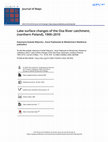
Journal of Maps
The study objective was to prepare a quantitative inventory of lakes and to assess their longterm... more The study objective was to prepare a quantitative inventory of lakes and to assess their longterm changes. The research area included the Osa river basin (northern Poland), which is located in a lake district. The research was based on historical cartographic materials published in 1900-1947 (German 1:25,000 'Messtischblatt' topographic maps) and modern topographic maps from 2010 (The 1:50,000 Digital Map of the Hydrographic Division of Poland [MPHP]. The number of lakes increased from 173 to 235, while the total surface area of the lakes fell by 107.55 ha. The largest number of lakes belonged to the 1.0-5.0 ha range on both MPHP and Messtischblatt maps. It was in this range that the largest increase in number of lakes and lake area relative to the historical maps was found. A significant reduction in area of lakes was recorded in the group of lakes with an area from 50 to 100 ha.











Uploads
Papers by Włodzimierz Juśkiewicz